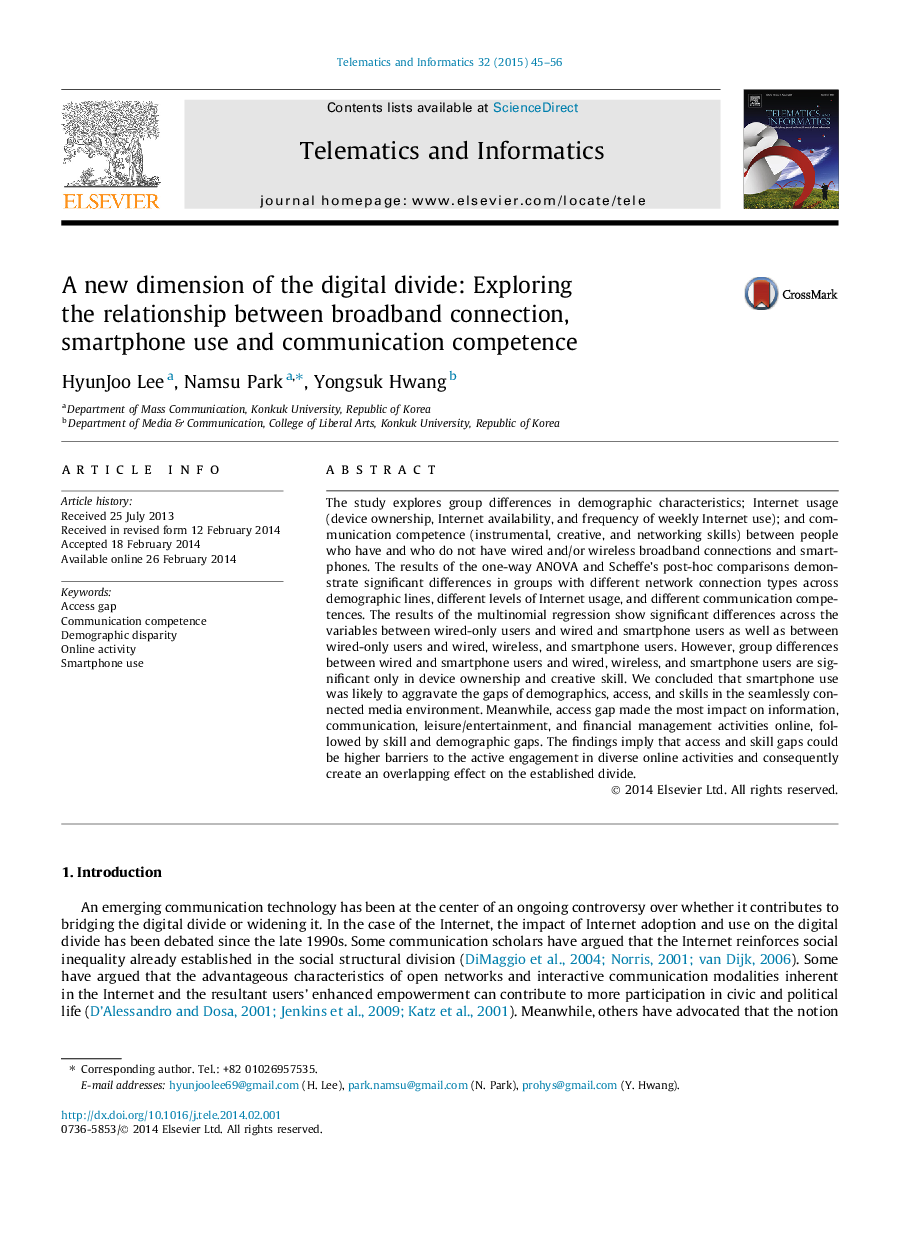| Article ID | Journal | Published Year | Pages | File Type |
|---|---|---|---|---|
| 464439 | Telematics and Informatics | 2015 | 12 Pages |
•Explores group differences depending on broadband connection types and smartphone use.•Group differences result in creating a new dimension of digital divide.•Examines the effect of constructs of digital divide on online activities.•Online activities are mainly influenced by Internet usage and communication competence.
The study explores group differences in demographic characteristics; Internet usage (device ownership, Internet availability, and frequency of weekly Internet use); and communication competence (instrumental, creative, and networking skills) between people who have and who do not have wired and/or wireless broadband connections and smartphones. The results of the one-way ANOVA and Scheffe’s post-hoc comparisons demonstrate significant differences in groups with different network connection types across demographic lines, different levels of Internet usage, and different communication competences. The results of the multinomial regression show significant differences across the variables between wired-only users and wired and smartphone users as well as between wired-only users and wired, wireless, and smartphone users. However, group differences between wired and smartphone users and wired, wireless, and smartphone users are significant only in device ownership and creative skill. We concluded that smartphone use was likely to aggravate the gaps of demographics, access, and skills in the seamlessly connected media environment. Meanwhile, access gap made the most impact on information, communication, leisure/entertainment, and financial management activities online, followed by skill and demographic gaps. The findings imply that access and skill gaps could be higher barriers to the active engagement in diverse online activities and consequently create an overlapping effect on the established divide.
